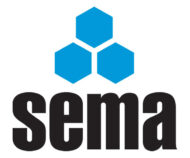The first question this month asks about Moving Racking and the second asks about the Height Requirements for shelving that is not attached to the floor or wall.
 Moving Racking, What to look out for
Moving Racking, What to look out for
Q. I am looking to have some 5.5mt x 1100mm racking moved, could you please tell me if there is a minimum distance from the roof, lighting or walls.
A. You should always have sufficient clear distance between the pallets being placed on the racking and any obstructions such as walls, roof or lighting and there should be a defined minimum clearance for the safe operation of the storage system.
This defined minimum clearance depends on the specific method of operation in the warehouse and it is also important that an allowance is made for the location and movement of the obstruction or load including: –
•The tolerance and possible movement of the racking system
•The tolerance in the placement of the load on the racking while being deposited or retrieved.
•The tolerance of the size of the loads being placed and any possible movement of the load when stored.
•The tolerance of the location of the obstruction and possible movement of the obstruction
•Companies have a general duty of care to their employees who will work in and around the racking and should ensure that any alterations or movement of the racking is considered and carried out by competent people who will leave a stable structure suitable for purpose after any alterations have taken place.
SEMA would recommend that the work was carried out by suitably trained installers as errors in the installation can lead to dangerous racking. Often a specialised racking contractor would wish to demonstrate competence by a qualification such as SEIRS (Storage Equipment Installers Registrations Scheme) operated by SEMA. This would be seen as good practice and the scheme has been endorsed by the HSE.
However, it is open to anyone to demonstrate competence by other means if they so wish.
As with the repositioning of any equipment you should make sure that you do not compromise the fire strategy of your warehouse e.g. fire escapes, sprinklers, position of fire-fighting resources etc.
Height Requirement
Q. Is there a legal height for shelving that is not attached to the floor or wall?
A. In general shelving codes such as the SEMA “Code of practice for design of Low-rise static steel shelving” and “FEM10.2.06-1 Hand loaded low-rise steel static shelving – Verification by experimental methods – Shelving design code – Part 1” recommend that shelving should not be attached to the building structure i.e. the walls. Please be aware that these codes give recommendations and good practice rather than “legal” requirements.
In terms of fixing shelving to the floor this depends upon the height to width ratio (H:W) of the shelving.
The SEMA code recommends the following;
14.2 Height to Depth Ratios
14.2.1 The height of the shelving for the purpose of assessing height to depth ratios shall be the height to the top of the topmost loaded shelf. The depth of the shelving shall be the overall depth of the frame. Where shelving is joined together back to back to form double sided runs, the depth of the shelving shall be the overall depth of the two frames and the space between provided that the links joining the frames together are spaced at not more than 2.0m centres vertically.
14.2.2 For height to depth ratios not exceeding 4:1 the shelving can be free standing without the need to fix to floor, walls or adjacent structures. Care should be taken in all cases to ensure that unsuitable floor coverings are identified. For instance, thick carpet can result in unstable structures and might need to be removed.
14.2.3 For height to depth ratios above 4:1 but not exceeding 6 to 1 the minimum requirements for floor fixings shall be as follows:
Where shelving is subjected only to gravity loads plus incidental horizonal forces from loading and off-loading of shelves, each upright on the perimeter of a run shall be fixed to the floor through its base plate by a bolt, stud or other such fixing capable of safely resisting a horizontal shear load of not less than 3kN and a tensile force of not less than 2kN.
Of course, not all racking and shelving available in the market today is designed according to the SEMA (or FEM) codes.
SEMA Rack Safety Awareness Inspection Courses
SEMA runs a one-day safety course on Rack Safety Awareness and Inspection. These courses are aimed at end users, giving an in-depth look at the need for inspections, how to conduct an assessment and what actions to take when this is completed. These courses are held at the SEMA headquarters in Burntwood, Staffordshire, but arrangements can be made to hold them at the delegates’ premises.
SEMA Approved Rack Inspectors Qualification
This qualification is aimed at professionals who conduct rack surveys as an integral and significant part of their duties. It involves delegates in undertaking an in-depth SEMA Course, together with an examination and practical assessment. CPD will be an important part of the qualification, demonstrating to end users that SEMA Approved Inspectors maintain a high professional standard.
SEMA Publications
SEMA has 26 publications in stock – Codes of Practice, ‘Guides’ and European documents – all of which are available to purchase online. For further information on these documents contact SEMA.
SEMA




Comments are closed.